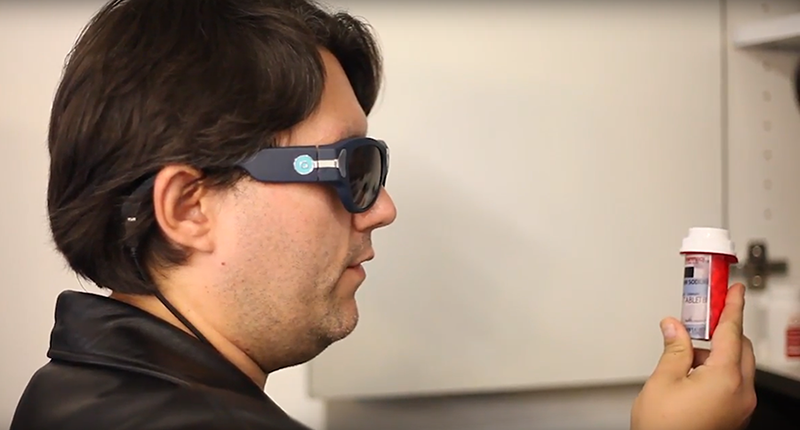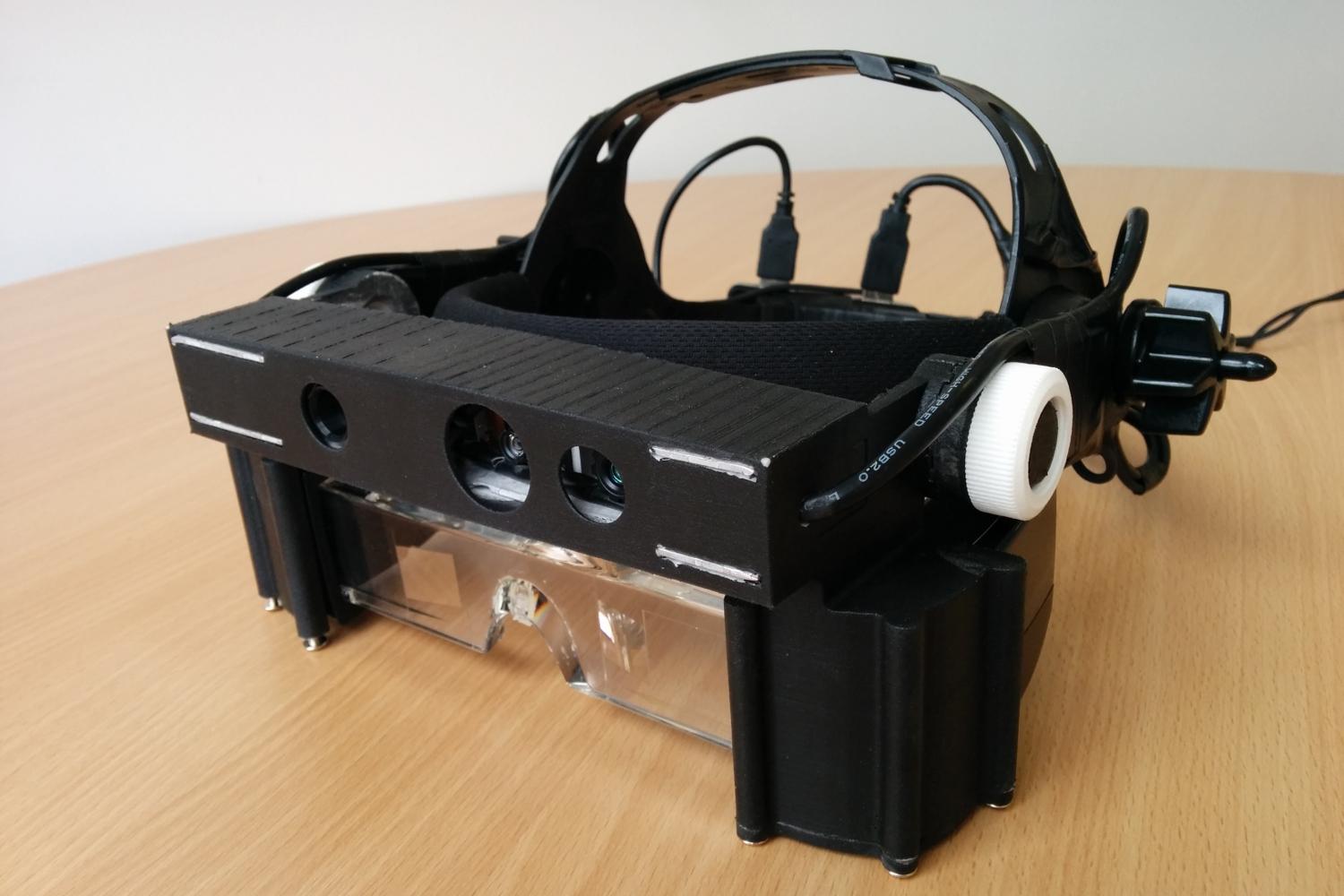Discover the Latest in Assistive Technology for the Blind
Discover the Latest in Assistive Technology for the Blind
Blog Article
Discover Innovative Tools Created for the Visually Impaired
The growth of ingenious devices for the aesthetically impaired represents a significant innovation in availability and freedom. Technologies such as smart glasses with AI capabilities and mobile applications developed to supply acoustic summaries are improving day-to-day experiences for customers. In addition, wearable devices that utilize haptic comments enhance environmental recognition, while contemporary Braille developments offer brand-new methods to engage with text. As these tools continue to develop, their influence on the lives of those with aesthetic disabilities elevates important questions about the future of inclusivity and freedom in different facets of life. What lies ahead in this technological landscape?
Smart Glasses for Navigating

Smart glasses designed for navigating are changing the means visually impaired people interact with their environment. These advanced tools use a mix of video camera innovation, expert system, and auditory feedback to offer real-time info about environments. By utilizing obstacle detection systems, wise glasses can alert users to prospective threats, enabling more secure mobility in both acquainted and strange settings.
The combination of GPS technology further improves navigating abilities, permitting individuals to receive auditory directions as they move. This hands-free method not just promotes freedom however likewise encourages visually damaged people to navigate metropolitan landscapes with increased confidence. In addition, many clever glasses are geared up with features that identify spots and street indicators, offering contextual information that improves the customer experience.
Moreover, the growth of these gadgets is continuously progressing, with business functioning to boost the precision of things acknowledgment and expand the variety of navigational functions. As clever glasses end up being extra cost effective and accessible, they hold the prospective to substantially transform life for aesthetically damaged individuals. Ultimately, these ingenious devices stand for an essential step toward inclusivity, offering improved movement and a better sense of autonomy for individuals browsing the world around them.

Mobile Application for Daily Living
Just how can mobile applications improve the every day lives of visually impaired individuals? Mobile apps are revolutionizing the way aesthetically damaged users navigate their atmospheres, take care of daily tasks, and gain access to information. These applications provide important support through various performances, promoting self-reliance and enhancing lifestyle.
Numerous innovative mobile apps are developed particularly for everyday living. Applications like Be My Eyes link visually impaired individuals with sighted volunteers through video clip phone calls, enabling them to get real-time assistance with tasks such as reviewing tags or navigating unfamiliar spaces. Seeing AI, created by Microsoft, uses man-made intelligence to define environments, checked out message, and recognize objects, efficiently changing a smartphone into a powerful tool for daily assistance.
Furthermore, navigating apps tailored for the aesthetically damaged, such as Aira and BlindSquare, provide audio-based instructions and ecological information, making it possible for users to traverse their environments securely and confidently. Past navigating and immediate aid, mobile apps also sustain organization and task management, with features that help individuals establish reminders, produce to-do checklists, and track appointments. In summary, mobile applications work as vital sources, empowering visually damaged individuals to lead even more independent and meeting lives.
Wearable Technologies for Assistance
Empowerment with modern technology is progressively obvious in the world of wearable devices developed to help aesthetically damaged people. These cutting-edge tools integrate seamlessly into day-to-day live, enhancing navigating and giving vital feedback to users. For instance, wise glasses furnished with electronic cameras can acknowledge faces and review message aloud, enabling individuals to connect more confidently in professional and social setups.
One more noteworthy innovation is making use of haptic feedback systems in wearable tools. These systems make use of resonances or other responsive signals to convey details concerning the user's atmosphere, such as barriers or modifications in surface, enhancing movement and safety. Wearable technologies additionally include wristbands that attach to mobile phones, alerting users to notifications through subtle resonances, hence boosting connection without dependence on aesthetic hints.
As these innovations proceed to advance, they are not only boosting independence for aesthetically damaged people but likewise promoting a higher sense of inclusion in culture. By linking the space between obstacles faced in daily living and the possibility for autonomy, wearable innovations serve as pivotal devices in the mission for equal rights browse this site and empowerment for those with aesthetic disabilities.
Audio Description Devices
Sound summary devices play a vital role in boosting access for aesthetically damaged individuals, giving them with the ability to involve with visual media. Smart glasses for the visually impaired. These tools use narrated summaries of essential visual aspects in films, television programs, and live performances, ensuring that users can completely understand the context and emotions communicated through visuals
Audio description can be incorporated right into different platforms, consisting of streaming services, movie theater screenings, and live cinema. Many preferred streaming solutions currently include audio description as an access attribute, allowing audiences to choose it conveniently. In addition to traditional media, specialized applications additionally exist, giving audio descriptions for art exhibitions, galleries, and various other social events.
The effectiveness of audio summary depends upon the ability of the storytellers, who must share visual information succinctly without interfering with the original sound. Technologies in this field are likewise leading the method for even more customized experiences, where customers can change the degree of information and pacing according to their preferences.
Braille Innovations and Gadgets
Braille developments and tools have actually significantly transformed the way aesthetically impaired people engage with text and info. Modern developments have led to the advancement of functional devices that boost click for info proficiency and freedom amongst users.
Furthermore, portable Braille notetakers integrate traditional Braille input with modern capabilities, facilitating note-taking, scheduling, and document editing on the go. AI-powered visual aids. These small tools usually feature text-to-speech abilities, linking the void in between Braille and auditory information
Furthermore, innovative Braille printers have actually arised, enabling users to produce Braille tags, documents, and academic materials successfully. This access promotes higher engagement in expert and academic atmospheres, ultimately promoting inclusivity.
Moreover, research right into clever Braille technologies remains to broaden. Instruments that integrate artificial knowledge are being explored to supply real-time navigation aid and contextual info, enhancing the individual experience in diverse settings. On the whole, these developments mirror a commitment to encouraging visually damaged individuals through modern technology, ensuring they can conveniently gain access to and involve with the world around them.

Verdict
The innovation of innovative devices for the visually damaged significantly enhances self-reliance and high quality of life. These technologies not just foster greater inclusion but likewise promote autonomy in day-to-day activities, inevitably contributing to a much more fair and available society for visually damaged people.
As smart glasses become a lot more accessible and budget friendly, they hold the prospective to dramatically transform day-to-day life company website for aesthetically impaired users. Mobile apps are reinventing the means aesthetically impaired customers browse their atmospheres, take care of day-to-day tasks, and gain access to details. Applications like Be My Eyes connect visually impaired individuals with sighted volunteers by means of video clip phone calls, permitting them to get real-time aid with jobs such as reading labels or navigating unknown areas.In addition, navigating applications customized for the aesthetically damaged, such as Aira and BlindSquare, offer audio-based directions and environmental information, allowing individuals to traverse their surroundings safely and confidently.The improvement of ingenious devices for the visually impaired significantly enhances independence and quality of life.
Report this page